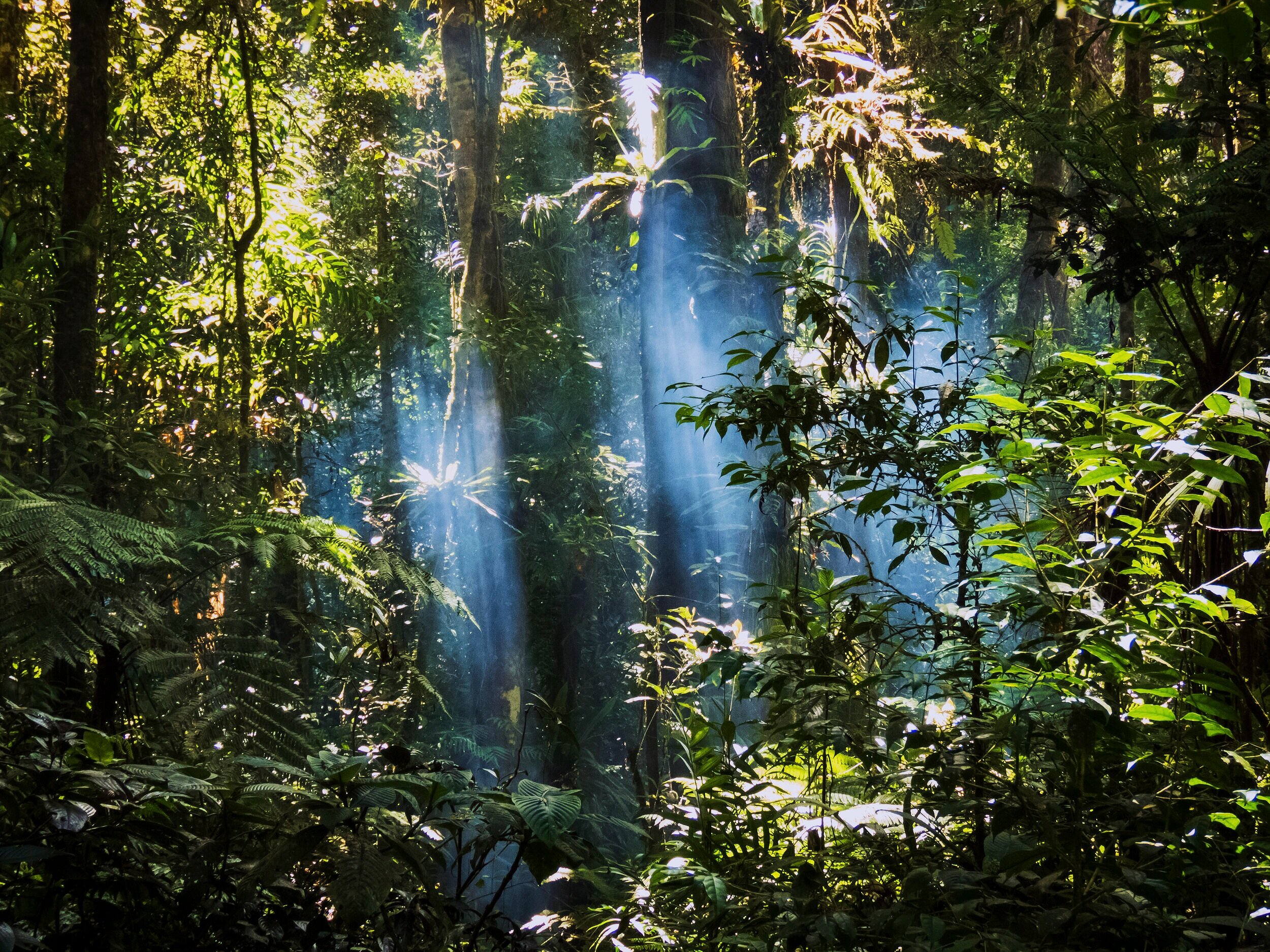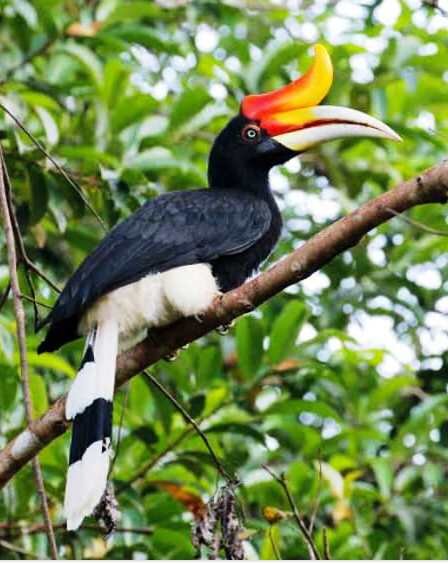
Rainforests and Biodiversity
Tropical Rainforests
Home to over half the world’s plant and animal species, tropical rainforests are one of the most important ecosystems on earth. They are able to store and absorb vast amounts of CO2, playing a huge role in the prevention of global warming, and therefore being of great value to the planet, especially in the current climate crisis.
Nevertheless, these forests are disappearing at an alarming rate, and the negative environmental consequences of this deforestation are seen globally. These include damage to natural water sources, reducing water quality and quantity, air pollution as forests are no longer present to absorb the vast amounts of CO2 released from the burning of fossil fuels causing an increase in greenhouse gas emissions, and of course, huge losses of biodiversity.
Biodiversity is critical for the stability of all ecosystems, and each species has an important, specific role to play. Destruction and reduction of many species can disrupt ecosystems, preventing them from functioning and providing the valuable ecosystems services nature needs to sustain life for all species, including humans.
Indonesia’s Tropical Rainforests
The country of Indonesia is made up of more than 17,000 islands. The largest include Sumatra, Java, Borneo, Sulawesi and Papua. It is the world’s 14th largest island country and over 267 million people call it home, ranking it the 4th most populated country on earth. Furthermore, Indonesia possesses the third most extensive tropical rainforest in the world. These ancient rainforests account for 2.3% of all global forest cover, and 39% of forest cover in southeast Asia. Indonesia is known as one of the worlds ‘mega-diverse’ countries. It contains an estimated 10,000 plant species from 17 endemic genera, 201 mammal species and 580 species of birds! Nonetheless, tropical rainforest loss in Indonesia contributes to the highest annual deforestation amongst all of the tropical countries. This has resulted in high levels of plant and animal extinctions, and ranked it as the third largest global emitter of carbon dioxide. In the last 20 years, Global Forest Watch has reported a loss of 24.4mha of Indonesia’s tree cover.
Sumatra’s Tropical Rainforests
Indonesia’s high and increasing deforestation rates have predominantly occurred on the island of Sumatra, accounting for 47% of Indonesia’s total national deforestation. Over the past 70 years, Sumatra has experienced one of the greatest losses of any tropical rainforest in the world.
Sumatra’s deforestation is the most extreme in the central, west and south of the country. Between 2001 and 2017, the province of Riau lost 46% of its forest cover, South Sumatra 36% and Jambi province 32% of their forest cover, according to globalforestwatch.org. This loss has almost exhausted the lowland forest areas. These areas have been targeted first as they are lowland forests, therefore they are flatter and easier to access. Much of this remaining forest is confined to small protected areas and national parks, surrounded by human dominated landscapes essentially confining any species and preventing movement to other areas. The largest and most sustainable remaining tropical forest is the Leuser and Ulu Masen ecosystems, located in the north of the island. This area is now the last place on earth that the critically endangered and endemic Sumatran orangutan (pongo abeli), Sumatran tiger (Panthera tigris), Sumatran rhino (Dicerorhinus sumatrensis) sun bear (Helarctos malayanus) and the Sumatran elephant (Elephas maximus sumatranus) still exist together.

Sumatra’s biodiversity.
The rich diversity of Sumatra is facing a major extinction crisis, with numerous, endemic species now listed as Critically Endangered by the IUCN, due to their disappearance from many of Sumatra’s provinces along with their tropical forest homes. Threats to Sumatra’s wildlife include: habitat fragmentation, hunting, capture of species for the wildlife trade and conflict with people as a consequence of deforestation. As forests are cut down and roads constructed, it becomes easier for people to enter areas that were restricted before, and therefore more and more species become at risk.
Although large scale deforestation is the major cause of biodiversity loss, the knock on effect of these other factors are rapidly increasing species declines, and these factors need to be addressed, measured and tackled alongside forest loss to prevent mass extinctions. By developing a better understanding of the drivers of species depletion's, we can work towards securing their future. Together with local institutions and communities, we can develop and design effective management plans to help both local people and wildlife, and push governments to implement and enforce effective policies.















